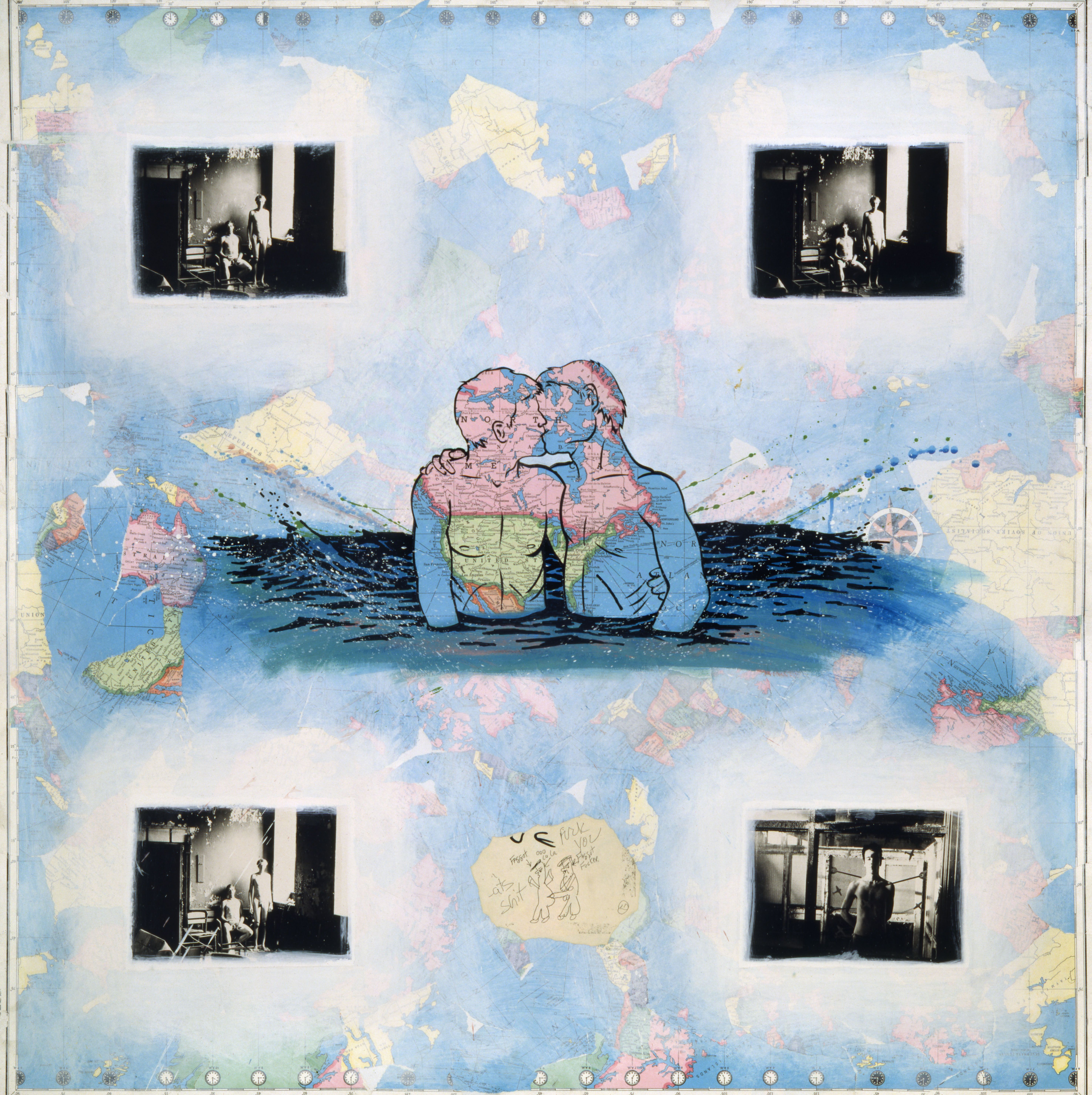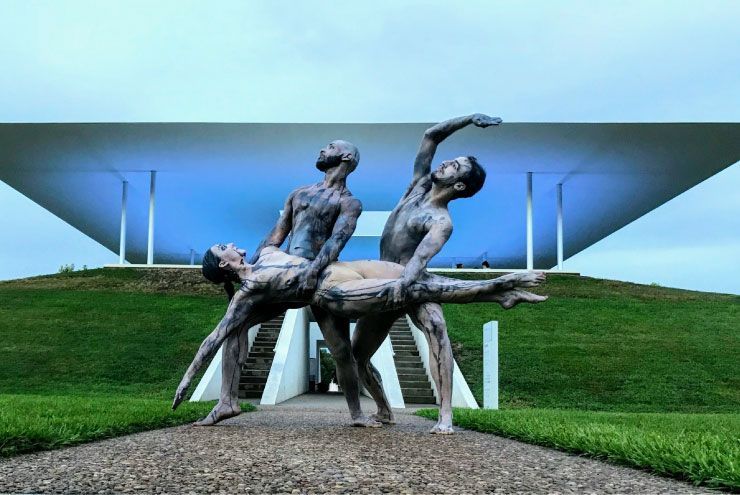By Barrett White
We’ve all seen the photo: a man, pictured from behind during a 1988 demonstration at the FDA headquarters. The back of his denim jacket contains a large inverted pink triangle and the justifiably livid words stenciled in white:
IF I DIE OF AIDS—FORGET BURIAL—JUST DROP MY BODY ON THE STEPS OF THE F.D.A.
The man in the jacket is artist David Wojnarowicz, the subject of the new documentary film Wojnarowicz, now playing as part of the Museum of Fine Arts, Houston’s Virtual Cinema series.
By midyear 1992, AIDS would in fact take Wojnarowicz’s life. He was just 37 years old.
The film, directed by Emmy-winner and former RuPaul’s Drag Race showrunner Chris McKim and produced by World of Wonder-WOW Docs’ Randy Barbato and Fenton Bailey (also of Drag Race fame), is a gutting, honest, and first-person telescopic look at Wojnarowicz’s life. From his abusive childhood, to his days hustling in New York City, to the grimy art scene of a 1980s East Village—nearly everything in the documentary is pulled from primary sources right out of Wojnarowicz’s files. “It’s like a time capsule of his relationships,” says McKim of the hundreds of hours of self-tapes and answering machine recordings that Wojnarowicz left behind, many of which are featured in the film. “There’s so much personality in these tapes.”

In the end, McKim was able to pull together the pieces of the documentary without requiring Wojnarowicz’s surviving friends and family to interview about events from 40 years ago—their words still exist today, immortalized on tape, and now in documentary format.
Some of the voices we hear, like that of the great photographer Peter Hujar, would be impossible to replicate. Hujar, who was like a surrogate father to Wojnarowicz, passed in 1987. The voicemail messages he left Wojnarowicz tell a story all their own. “Time takes its toll; people age. I wanted to allow David to be on the same playing field as everyone, as all the voices,” McKim says.
Alongside Wojnarowicz’s voice are appearances by the incomparable Fran Lebowitz, filmmaker Richard Kern, culture critic Carlo McCormick, artist Sur Rodney (Sur), curator Gracie Mansion, and friend and filmmaker Marion Scemama.
It’s Wojnarowicz’s own haunting, baritone voice—perhaps predictably—that utters some of the most striking lines in the documentary. Over opening credits, he sets the tone of the film and of the era: “When I was diagnosed with this virus, it didn’t take me long to realize I’d contracted a diseased society as well.”
Over 2,100 people died of AIDS in New York City alone in 1986. By 1987, more than a million Americans were estimated to have been living with HIV. Nearly 100 percent died within five years of their diagnosis. Wojnarowicz understood that one can’t separate politics from AIDS: dying of AIDS in America under the Reagan administration with no healthcare—yeah, it’s political.
His work, then, shone spotlights on the mistreatment of the LGBTQ+ community and on ardor of AIDS activists (he was, after all, an active member of ACT UP). While curators and artists were stirred by Wojnarowicz’s work, he was met with pushback by conservative talking heads for his depictions of homoerotic works, and in some cases, of Jesus Christ himself—an issue that has persisted well beyond his life. A Fire in My Belly, a video Wojnarowicz created in the 1980s portraying ants scrambling over a crucifix, was removed from the National Portrait Gallery following conservative outrage in 2010. “[My artwork] is my life, and I don’t owe it to anyone to distort that for their comfort,” Wojnarowicz says in the film. “I tried very hard to be normal, and tried very hard to be accepted, and on some level, it’s a terrific waste of time.”
The censorship of gay art and history is part of the impetus behind McKim’s film, beyond telling Wojnarowicz’s life story, of course. “There’s not a lot of gay history out there in the mainstream,” says McKim. “I hope people are inspired by David and what he has to say in the film, and the idea that if work we make as artists doesn’t contribute to the resistance, then you’re contributing to a system of control becoming more perfect.”
Perhaps Fran Lebowitz puts it best: “In the end, they never have the power of an artist. David Wojnarowicz is more powerful than every one of these preachers that ever lived, as a person and for what he put into the world.”
Wojnarowicz is available to stream as part of MFAH’s Virtual Cinema series starting April 2, 2021. You can find ticketing information here.







